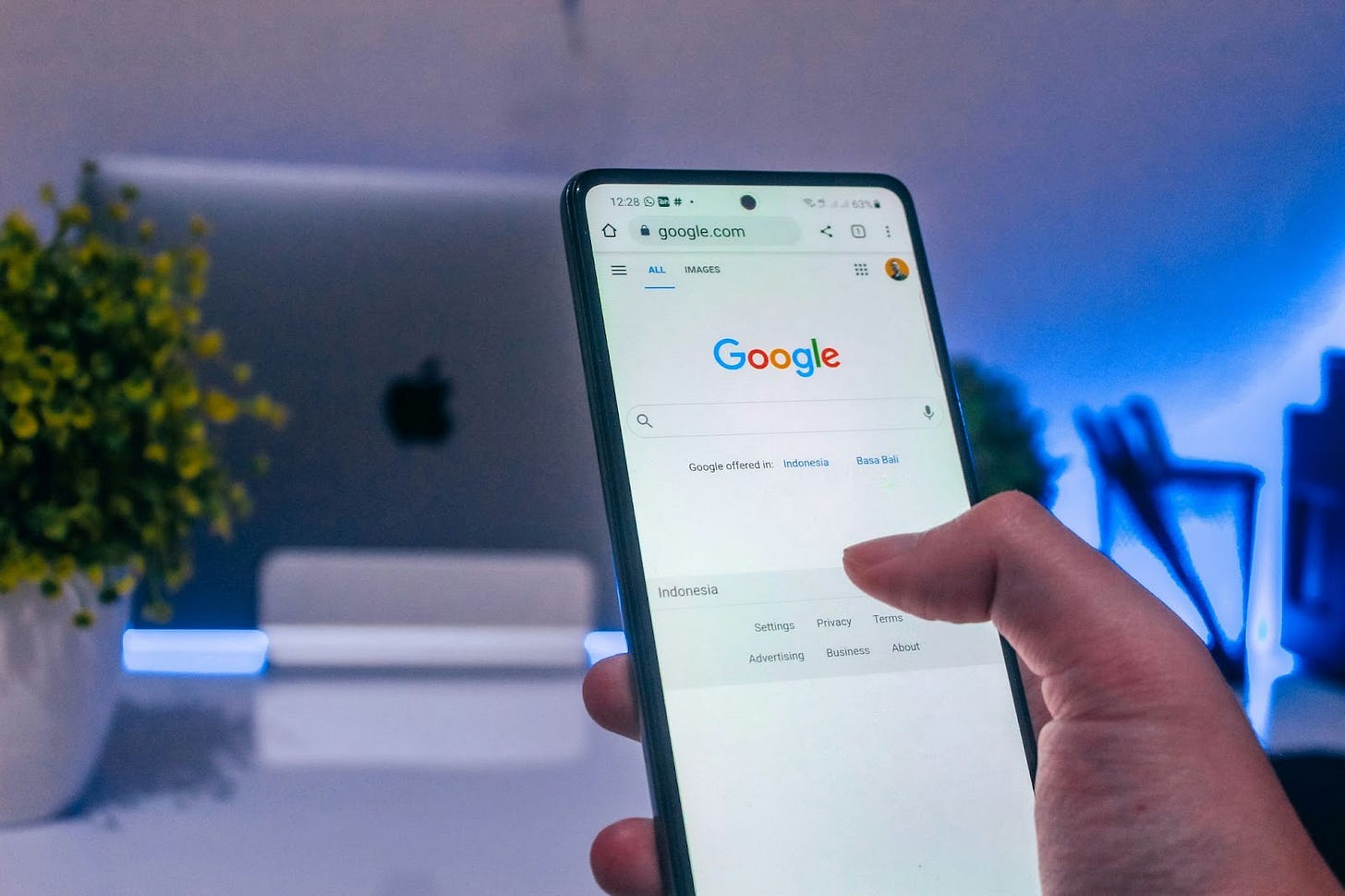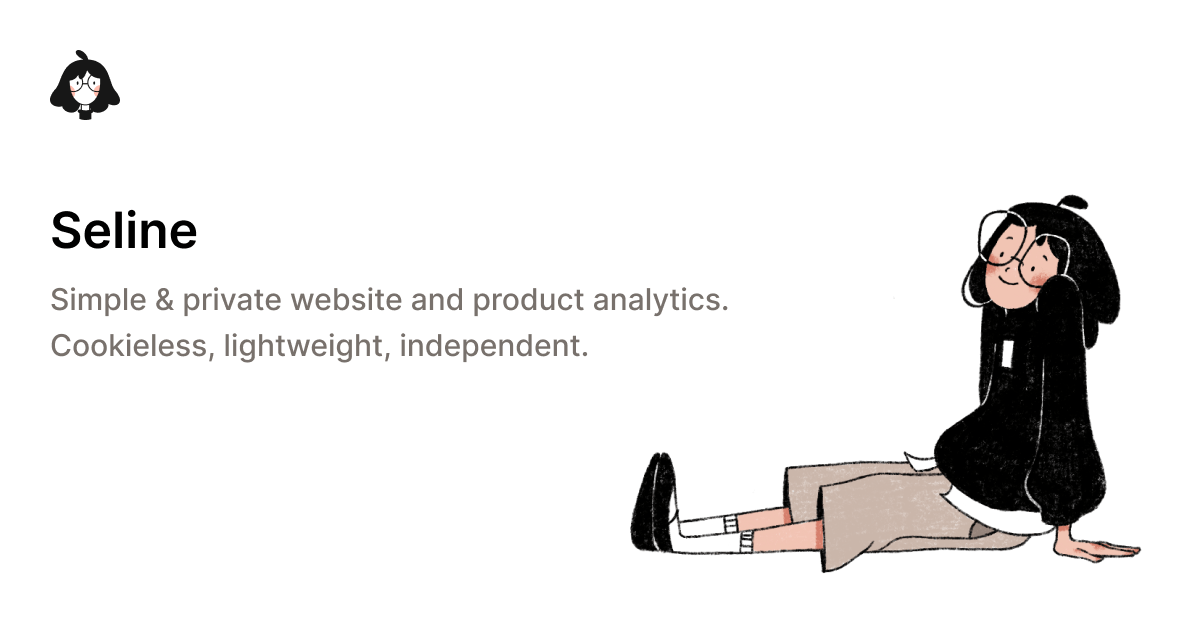Reactions and responses to AI Mode
We've rounded up reactions from experts to make sense of the next evolution of search — plus: join our Top Stories panel!
#SPONSORED
Analytics, simplified.
Meet Seline — the joyful website & product analytics platform. Designed for businesses, marketers, and teams, Seline combines an intuitive and digestible dashboard with visitor journeys and funnels. Trusted by 1,000+ companies that now see their stats clearly.
Hello, and welcome back. Jessie here, back from a weekend that included an Aysanabee concert and watching five full episodes of Taskmaster (and probably another hour of clips). Jason Mantzoukas goes full silly goose/chaos agent and the results are a true delight.
This week: Google's announcement of the expansion of AI Mode in the U.S. sent waves through the publishing industry. As the dust begins to settle, we've rounded up reactions from experts to make sense of the next evolution of search.
Our Top Stories panel discussion with Bryan Davis (the Associated Press) and Joy Johnston (Trisolute) is June 18 at 11 a.m ET/3 p.m. GMT. Register now!
We’re launching a mentorship program for folks in news SEO. Sign up here.

Let’s get it.
THE 101
Google expands AI Mode to all U.S. users
In May, Google announced AI Mode will roll out to all U.S. users – the culmination of a years-long effort to overhaul Search and put artificial intelligence at the core of its main product. Google called AI Mode the future of Search.
AI Mode synthesizes wide swaths of information in a detailed response to a user query, including news, without the need to exit Google — a huge threat to publishers who rely on search for traffic.
Worse yet, it is not possible to opt out of AI Mode without also disappearing from Google Search. That effectively forces publishers to allow their content to appear in the feature.
Here, we’ve rounded up some key responses from the SEO and publishing industry about AI and the threat it poses to journalism.
AI Mode will undermine original journalism
Press Gazette ran tests which suggest that AI is undermining original reporting. Rob Waugh reports that the feature reduces the number of sources shown in search results and makes it more difficult for users to explore topics in depth.
“[In a] search for information relating to Press Gazette’s recent original reporting on fake expert commentators appearing in the media, AI Mode linked only to other publishers that had followed up on the story,” he wrote.
AI Mode returns comprehensive answers for news searches, with links “scattered sporadically through the text, and a panel showing three publisher sites at the side,” the Press Gazette found.
The launch of tools like AI Overviews has coincided with a significant year-over-year drop in traffic to the world’s 500 largest publishers.
If that trend continues, the future of the web looks very different. In this new landscape, the web “will become a giant Wikipedia engine for AI attention,” Mark Kember told Press Gazette.
The worst case scenario for publishers is Google gobbling up and synthesizing our journalism, with the reader-facing user simply seeing a summary.
Barry Adams responds
On LinkedIn, SEO consultant Barry Adams summarized a talk he recently gave about the threats to journalism posed by AI Mode.
While AI Overviews and Top Stories are mutually exclusive — AIO does not pop up for news — AI Mode is not. It can summarize news very quickly, either on a specific news topic (i.e., “psg - inter”), or the latest updates (“trump tariff news”).
“AI Mode will kill traffic to news as much as it will kill traffic to informational web pages,” Barry writes. While stories will be shown (in the small, right rail of links), it’s unlikely it will generate clicks, he says.
The quality of information in AI Mode is much, much better than AI Overviews, which often gets things incorrect. And, as soon as there’s a clear monetization angle, Google will roll it out globally, Barry predicts.
“The traffic apocalypse this will cause publishers will be extremely painful.”
He also predicts that publishers, specifically those who rely heavily on traffic volume and advertiser revenue, will die off.
Already, Business Insider has announced layoffs of more than 20 per cent of its staff. In its memo to staff, the outlet said it is restructuring operations to “endure extreme traffic drops outside of our control.”
But the worst part, Barry says? “It's built on the publishing industry's output.”
“The wholesale theft of content to build these LLMs is directly responsible for the loss of traffic publishers are now experiencing,” he says.
To survive, publishers need new strategies that prioritize brand and meaningful connection with the audience. Getting off the “traffic treadmill” will be essential in a zero-click (apocalyptical) future.
Lily Ray’s thoughts
AI Mode effectively creates a bubble for the users, removing any friction (the need to click a link) from the search experience.
Lily Ray, vice-president of SEO strategy and research for Amsive, detailed in a LinkedIn post the ways AI Mode is designed to keep users within Google as much as possible.
When Google says AI Mode includes links to websites — what the company’s CEO Sundar Pichai said is “higher quality referral traffic” — it’s referring to a sidebar carousel of sources, off to the side of the main result.
“In theory, Google wants to portray to the public that these tools should still send traffic to the internet, as this has been core to Google's offerings and the value it delivers for 25 years,” Lily writes. “That said, the current design and implementation of AI Mode does not inspire much confidence that Google is serious about this.”
She details how AI Mode is embedding links — indicated with a dotted line — in a response to further Google searches, instead of providing the source’s website like a traditional search result.
They appear often in AI Mode, and are effective in driving new searches within Google. For example, a response in AI Mode may link to another search result for the name of a business, rather than providing the company's website. Google said on May 7th that there’s been an “overall query growth in Search”. This could be a contributing factor.
“It's clear that with AI Mode, Google wants to keep users in its own ecosystem, even if this creates an unusual or unintuitive experience, at first,” Lily writes.
While the upshot of AI Mode is reduced cognitive load for users reading a summary instead of independently exploring the web, there are potentially “devastating implications” for the millions of sites that rely on traffic to survive.
“It also poses serious questions about what the incentive will be for publishers to continue creating content, if LLMs like AI Mode simply consume and regurgitate their content, without providing easy ways for users to access the original source,” Lily writes.
A central frustration for many in SEO is that Google publicly touts the traffic it sends to publishers, when in reality, AI Mode is largely a walled garden, Lily articulates. Pichai’s interview with The Verge is full of defensive statements about how Google values the open web, but the company’s moves contradict this.
Not to mention there are also no Google tools that currently allow publishers to accurately track their visibility or traffic from AI Overviews or AI Mode.
Lily's post concludes with design solutions for AI Mode to better reflect the company's stated position about wanting to send traffic to publishers, including more inline links to answers, more original reporting and more modules for external sites.
The bottom line: These three responses to AI Mode’s rollout reflect what a lot of people in the industry are seeing, hearing and feeling. If AI Mode is the future of Search, its clear there is significant volatility ahead for publishers.
RECOMMENDED READING
Google news and updates
🤖 Ginny Marvin: “Your ad could trigger to show either above/below AIO or within AIO, but not both at this time.”
Even more recommended reading
🏆 Sara Guaglione: The winners and losers of Google’s AI Mode.
📎 Harry Clarkson-Bennett: Understanding AI Overviews: A patent-by-patent breakdown.
🙏 Rand Fishkin: Seriously, please stop with the new acronyms. It’s still SEO.
🗞️ Pete Pachal: The AI search wave is real. Can media survive it?
💼 Charlotte Tobitt: Who's suing AI and who's signing: The New York Times signs its first AI deal with Amazon.
🧑💻 Bill Adair: Google’s chief emissary to the news business is stepping down — and looking back.
💡 Rand Fishkin: “AI will replace all the jobs!” is just tech execs doing marketing.
↘️ Adam Clark Estes: Google as you know it is slowly dying.
📚 Melissa Bell: Lessons (and an apology) from the Sun-Times CEO on that AI-generated book list.
#SPONSORED - The Classifieds
Get your company in front of more than 13,000 writers, editors and digital marketers working in news and publishing. Sponsor the WTF is SEO? newsletter!
What did you think of this week's newsletter?
(Click to leave feedback.)
Catch up: Last week’s newsletter
Have something you’d like us to discuss? Send us a note on Twitter (Jessie or Shelby) or to our email: seoforjournalism@gmail.com.
Written by Jessie Willms and Shelby Blackley







